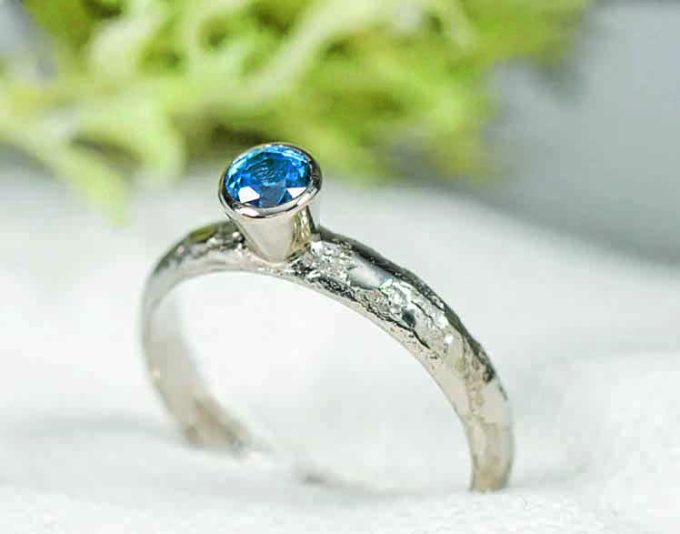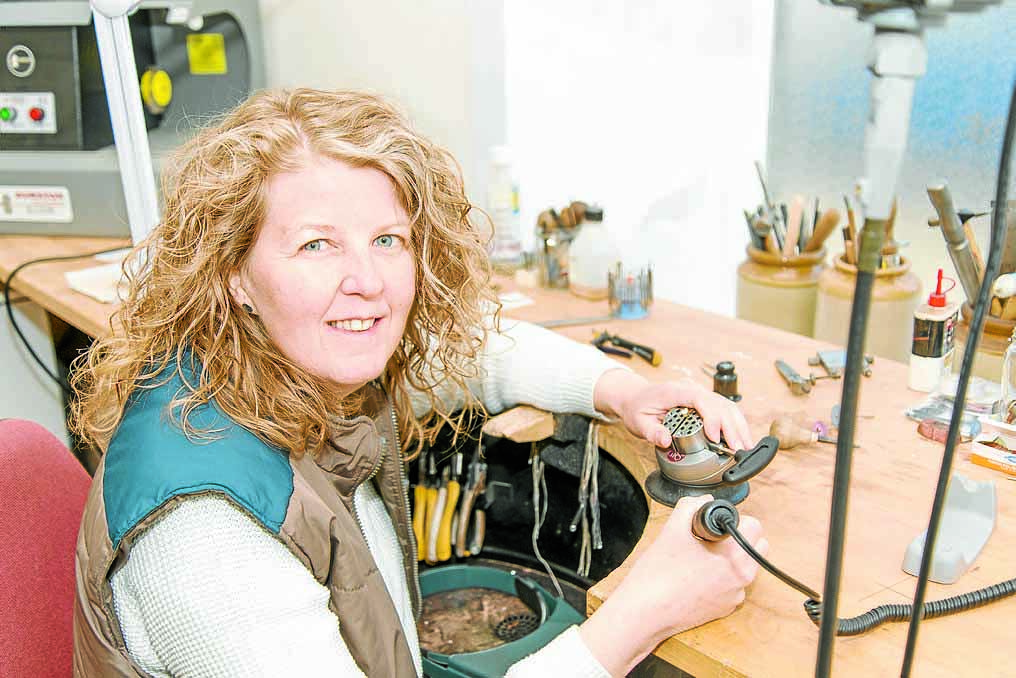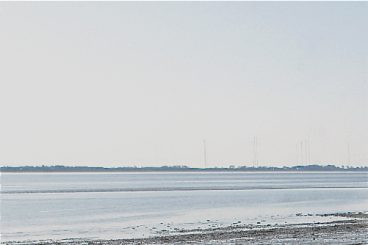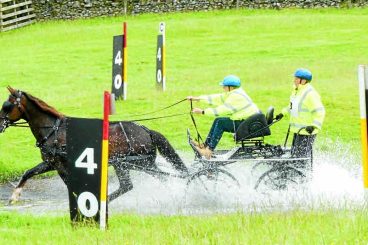A LANGHOLM jeweller has shared her expert advice on what to look for when picking and buying an engagement ring.
Lisa Rothwell-Young believes there are “no rules” for this most special of purchases.
She said: “It doesn’t have to be a diamond (unless you want it to be) and you don’t have to spend three months salary either – that’s just a load of marketing malarkey.
“Have a think about the jewellery you see them wearing a lot and take note.”
Lisa tends to recommend diamond, ruby or sapphire for the stone as they are the most robust for daily wear.
She added: “My own favourites are sapphires, they come in a huge range of colours and cuts. They come in a myriad of shapes and sizes, including fancy and custom cuts.
“When choosing a coloured gemstone (or a diamond), it’s also worth thinking about how proud you want the ring to sit on the finger. The depth of the stone will increase with size, so it will sit higher the bigger it is.”

Breaking it down into other key areas of consideration, she suggests:
* Style: are they quite traditional, or do they like something more unusual, minimal or blingy, dainty or showstopper? What colours do they wear? Are they drawn to geometric designs or nature inspired pieces? Do you want diamonds, coloured stones, or a mixture of both? Lisa advises when buying diamonds, make sure they are traceable to the mine of origin, or consider antique, laboratory created or recycled.
* Colour: did you know diamonds come in a multitude of different colours: various shades of white, champagne through cognac to brown, black and yellows, as well as very rare and expensive blues and greens. There are also salt and pepper diamonds, which are diamonds with inclusions and have a natural look and unique appearance. Diamonds are colour graded D-Z, D is colourless (white), Z is yellow.
* Cut: a better cut will result in a more sparkly diamond, the facets will be more symmetrical, have a better polish and will better reflect the light, said Lisa. Diamonds are most often shaped as rounds and ovals, an oval of the same carat weight will tend to look bigger than a round due to the way it’s cut. Other shapes to consider are pears, baguettes, cushion cuts, princess (square), ascher, emerald and marquis. The more unusual a cut, the more expensive it’s likely to be and the availability of different shapes is likely to depend on the size of diamond you choose. Rounds are the most available, especially in sizes under a carat.
* Carat: a carat is just a way of measuring the weight of diamonds. One carat equals 200mg, it’s divided into 100 points, so a 0.25carat diamond is 25 points. The bigger a diamond is, the rarer they become and therefore the price increases the greater in size they are.
* Setting: this is the metal that holds the stone in place and is a combination of style and practicality. The setting’s job is to hold the stone securely and show it off to best effect. Some people feel claw settings let in the most light, others find them likely to catch on things. Rubover settings enclose the stone in a ribbon of metal, they are minimal, unfussy and don’t catch, they’re also very secure. A partial rubover setting can be a good middle ground. Small stones (up to 3mm) can also be bead set, often seen as a halo on the top of a ring or on the shoulders.
* Precious metal: an engagement ring should be made of gold or platinum, but can be yellow, white or rose in colour, notes Lisa, adding: “Metal choices are 9ct gold, 18ct gold, platinum. If budget allows, most people will go for 18ct gold or platinum. Size for size, platinum will feel heavier on your finger than gold, 18ct gold is a good all round option. Contrary to popular belief, platinum will scratch – as will any metal.”






















